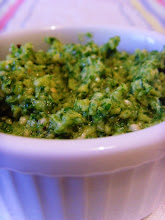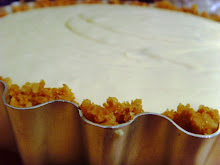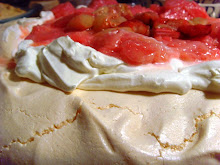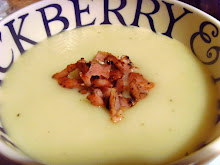
Tomorrow I will have been blogging for one year. It was a wet, rainy afternoon when I decided to see how easy it would be to set up a blog up. I was playing at it really. I'd just baked a rather scrumptious chocolate pudding (which I've since made several times) and suddenly felt the urge to share its deliciousness with the world at large (!) So I thought up a name, chose some colours and scribbled down my first post.
Blogging has exceeded my expectations in almost every way. Firstly, I didn't think I'd last more than a few weeks. I thought that I'd run out of things to talk about. 128 posts later and it is fairly clear that I have plenty to say. Almost anyone who knows me would be unsurprised by this as I almost always have something to say.
Secondly, it didn't occur to me that anyone other than my family (and possibly one or two friends) would read what I wrote. I remember well the great thrill I felt when someone who wasn't a friend or family first left a comment on one of my posts. Thank you Caroline. As it happens, only a few of my friends and family do read my blog. Those that I expected might be interested are not, whilst others I would not have dreamed to be interested in a food blog, check in fairly regularly and constantly surprise me with comments about dishes they've spotted here. My Mum, of course, reads from time to time (hello Mum!). She even tried out one of my recipes the other day and loved it: the ultimate compliment.

But ultimately, it is fellow food bloggers that encourage and inspire me. It is thanks to them (or should I say you?) that I have had such an enjoyable and delicious year. Over the past 12 months, I've rarely cooked the same thing twice (save a few particular favourites such as this, this and this). I've been inspired and tempted on countless occasions by fabulous recipes, tips, ideas and gorgeous photography.
The photography element has been another great surprise to me. I started out totally clueless, but having discovered the joys of the macro setting, understood the importance of natural light (shame that I do most of my cooking once it is dark) and got very used to lukewarm food I'm finally making a little progress (I think) on the photos. I hope they are getting better and that they give a good idea of what I cook. Again, I have fellow food bloggers to thank for helping me on my way here. What fun it has been!
Both Julia from A Slice of Cherry Pie and Nilmandra of Soy and Pepper have tagged me for a six word memoir. The rules are that I must choose six words to describe myself. Harder than it sounds, but here goes:
Warm
Sensitive
Greedy
Generous
Inquisitive
Stubborn
Thank you to all my readers and fellow food enthusiasts for making my first year of food blogging such a memorable one.














































 4. Pop in the oven and bake on the low heat for one to one and a half hours. When it is done, the exterior should be crisp but not in any way brown...
4. Pop in the oven and bake on the low heat for one to one and a half hours. When it is done, the exterior should be crisp but not in any way brown...


















